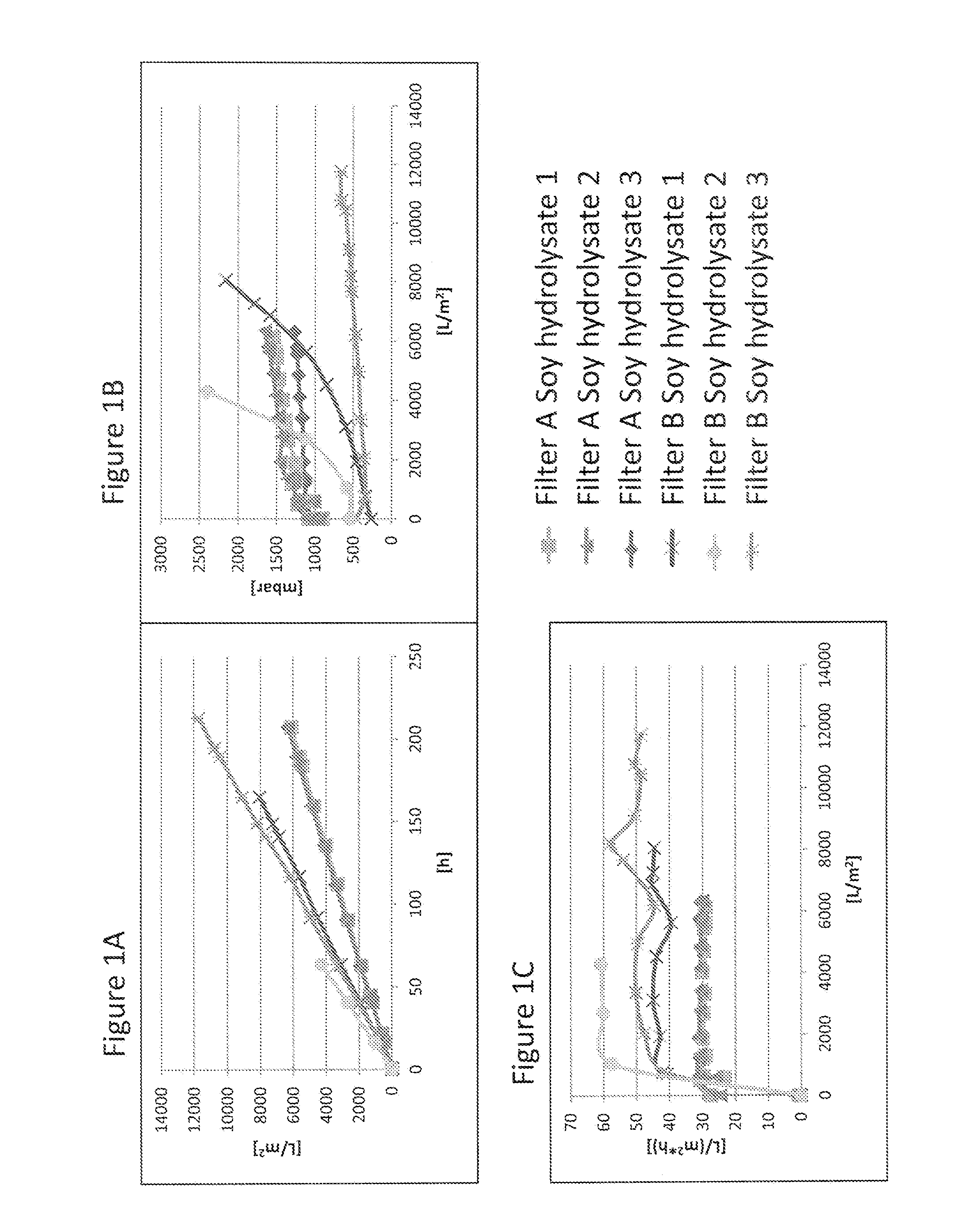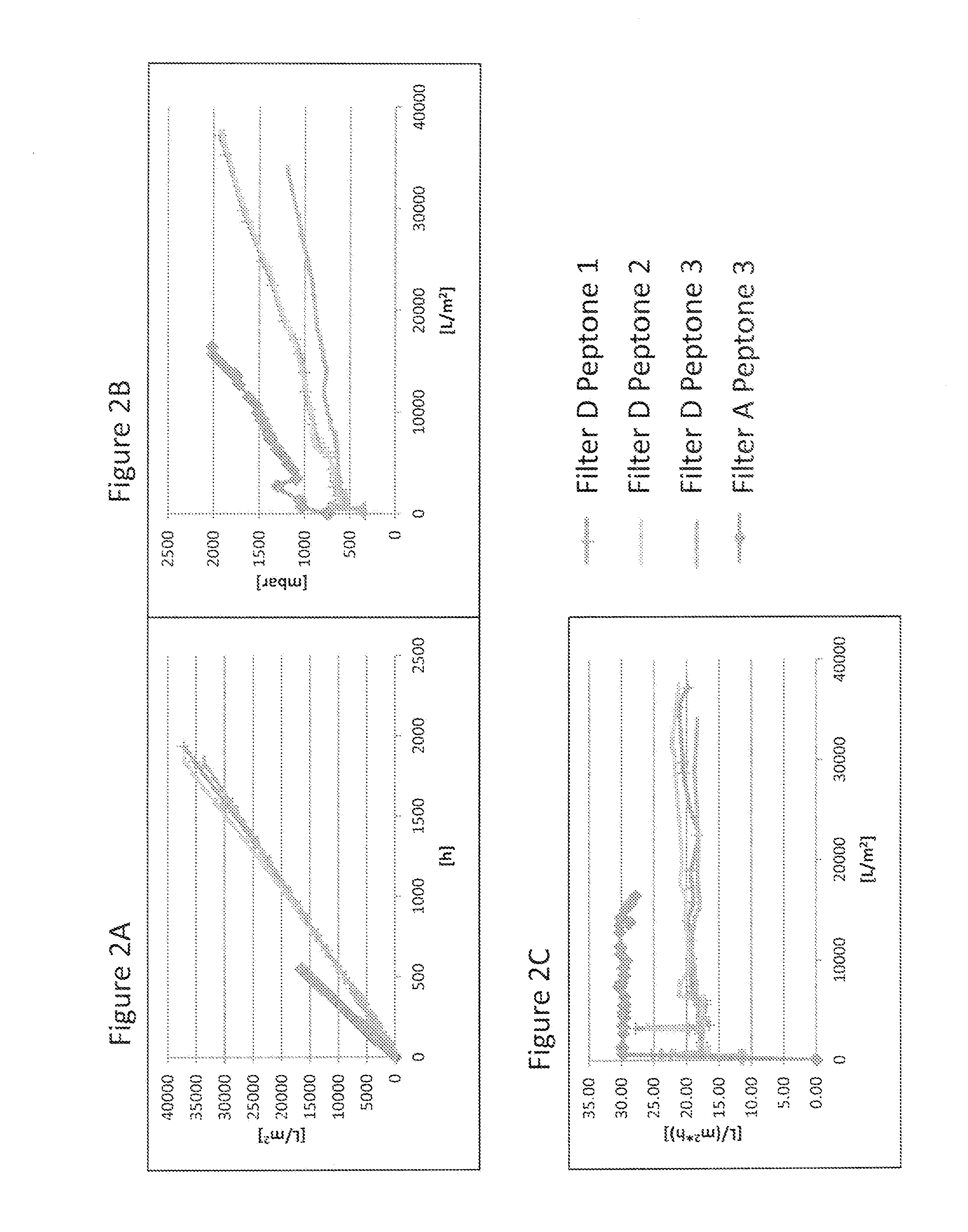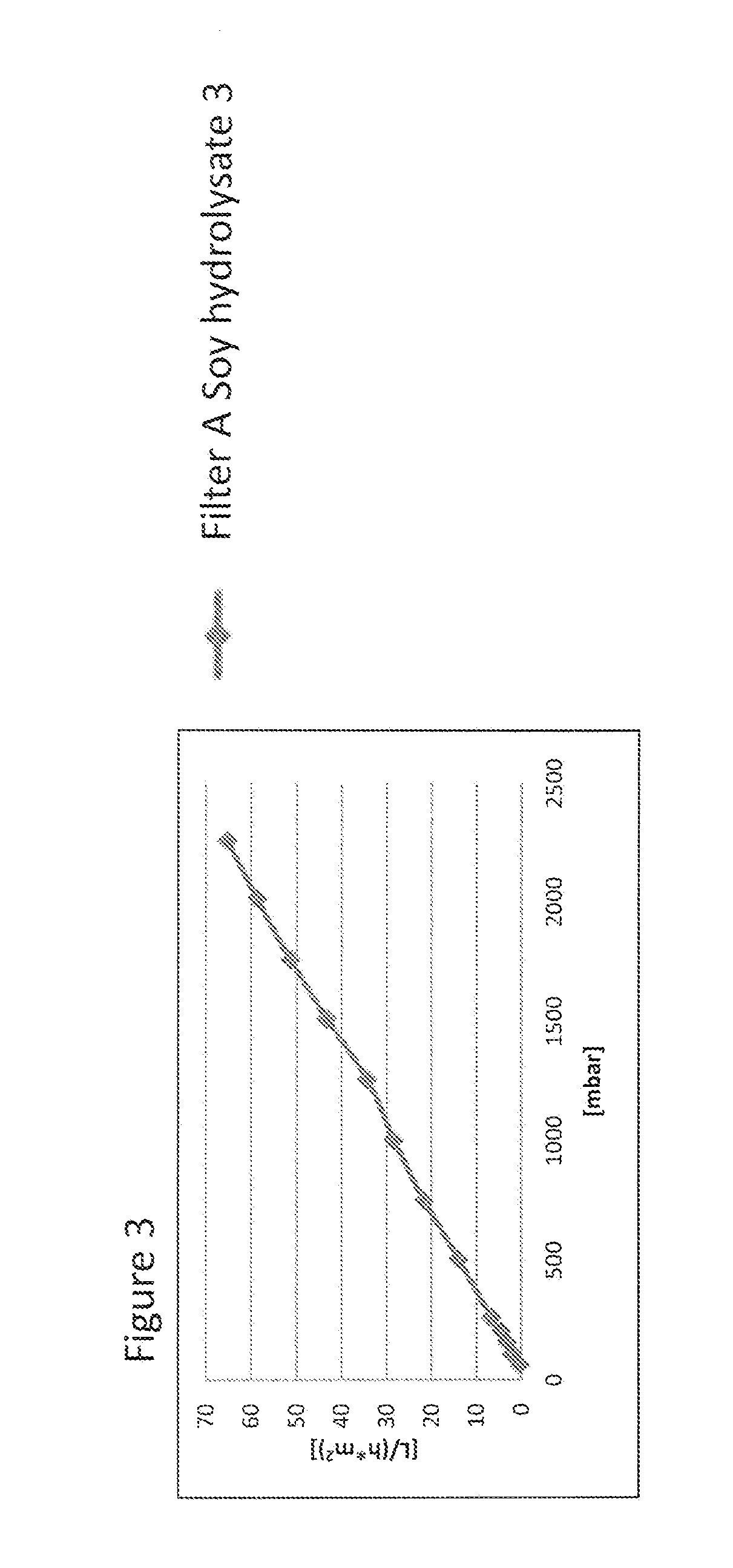Virus Filtration of Cell Culture Media
a cell culture media and virus technology, applied in the biopharmaceutical industry, sterilization of apparatuses, artificial cell constructs, etc., can solve the problems of difficult control and detection of upstream contamination, and affecting the safety of upstream contamination. , to achieve the effect of improving the virological safety of those preparations
- Summary
- Abstract
- Description
- Claims
- Application Information
AI Technical Summary
Benefits of technology
Problems solved by technology
Method used
Image
Examples
example 1
Scale Down Virus Filtration with Different Virus Filters and Cell Culture Media
[0102]Virus filtration membranes from different manufacturers (see Table 2) were assessed for their filtration kinetics in different filter sizes with cell culture media containing 4 g / L concentration of soy hydrolysates from different lots and suppliers (see Table 3). Cell culture media composition and preparation is described in Example 2. Filtration experiments were carried out either by controlling the pressure with a pressurized vessel (FIG. 3, FIG. 4, FIG. 5 and spiking experiments in FIG. 7, FIG. 8 and FIG. 9), or by controlling the flow rate e.g. by a peristaltic pump (FIG. 1, FIG. 2, FIG. 3 and FIG. 6). Other equipment used for temperature and pressure control of the experiments is described in Table 4.
TABLE 2List of virus filtersInternal filter code inFigures / ExamplesManufacturer / Product name / SizeFilter ASartorius Virosart CPV 180 cm2Filter BMillipore Viresolve NFP 3.1 cm2Filter CPall Ultipor VF...
example 2
Cell Culture Media Preparation
[0103]A general description of the cell culture media composition is provided in Table 5 below, with the composition of the different soy hydrolysates listed in Table 3 above. The different batches of cell culture media were sterile filtered with a sterile grade filter, e.g. a Pall Fluorodyne® II DJL Membrane Filter Cartridge 0.1μ prior to the different virus filtrations described in the examples. Media preparations described here were used for all experiments described and shown in FIG. 1 to FIG. 11.
TABLE 5Media compositionConcentrationComponent[g / kg]DMEM / HAMS F1211.76Ethanolamine0.00153Lutrol F680.25Soy hydrolysate4.0Trace element - stock solutionMax. 4 μg / LL-Glutamine0.6NaHCO32.0Purified waterAd 1 kg
example 3
Filter Preparation
[0104]The virus filters were prepared according to product manuals of virus filter manufacturers. Unless filters were delivered and assembled sterile, filters were autoclaved at >121° C. for 20 minutes.
PUM
 Login to View More
Login to View More Abstract
Description
Claims
Application Information
 Login to View More
Login to View More - R&D
- Intellectual Property
- Life Sciences
- Materials
- Tech Scout
- Unparalleled Data Quality
- Higher Quality Content
- 60% Fewer Hallucinations
Browse by: Latest US Patents, China's latest patents, Technical Efficacy Thesaurus, Application Domain, Technology Topic, Popular Technical Reports.
© 2025 PatSnap. All rights reserved.Legal|Privacy policy|Modern Slavery Act Transparency Statement|Sitemap|About US| Contact US: help@patsnap.com



